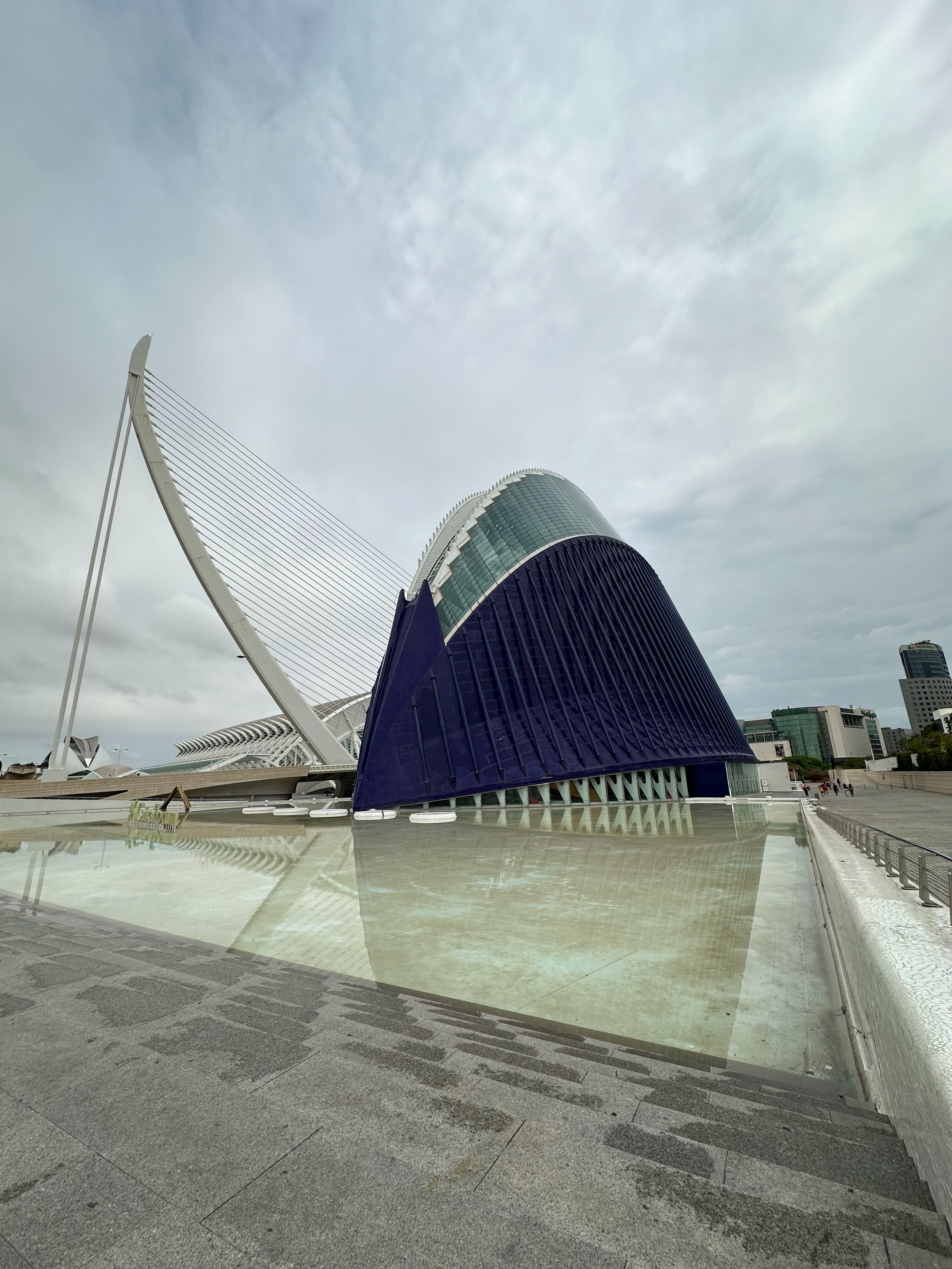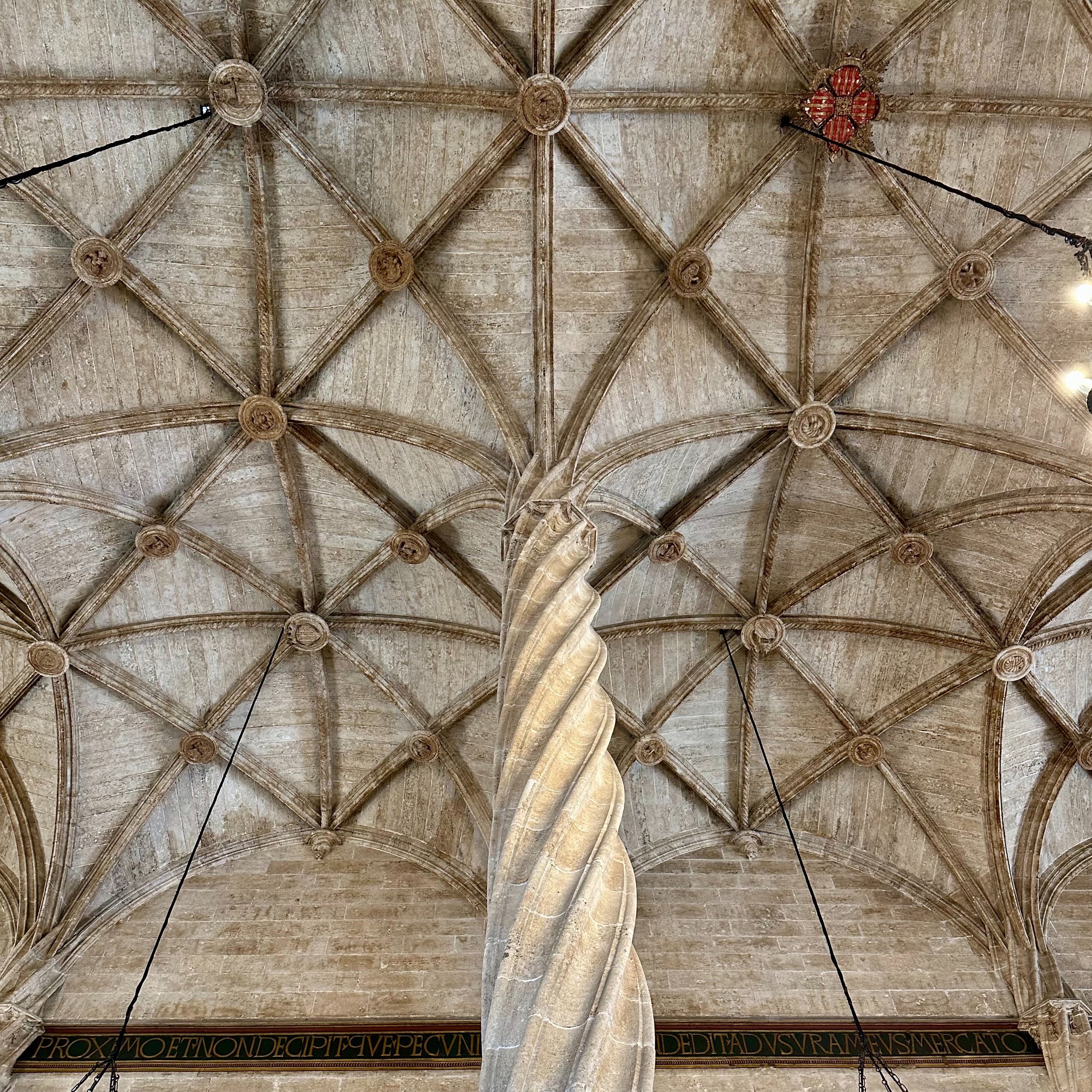About three weeks ago, the woman with whom we arranged the home exchange told us that her mom had an apartment in València1 that was currently empty and “ready for us” to visit. Shortly thereafter we started (well, my wife started) looking into flights and other travel arrangements to get down there.
On September 14, we flew from Santander to València. It was a short, hourlong flight.
Before the opportunity presented itself, we didn’t really know all that much about València (pronounced more like bah-len-thee-ah by those who live there). It turns out, there is a lot to see and do down there!
Language
One of the first things I learned was that many of the people in València speak not Spanish but Valencian (essentially a version of Catalan, a language spoken in nearby Catalonia). Actually, that’s not quite accurate; they speak Spanish, but they also speak Valencian, especially at home and amongst close friends. Due to recent political movements, the area now uses Valencian on most street signs, for place names, and in lots of other very conspicuous places. Of course, this made my efforts at trying to learn Spanish all the more confused … “What is a ‘palau?’” “Why does everything say ‘carrer?’” “Why do they keep spelling it ‘ciutat?’” etc.
I knew that they don’t really speak Spanish (or, again, only Spanish) in Barcelona, but I didn’t know this practice extended outside of Catalonia “proper.” But, I found out that the Catalan language (or “Valencian” in this case) extends into much of the neighboring provinces as well; it’s no accident that the Valencian flag and the Catalonian flag are so similar.
Ciutat de les Arts i Ciènces
One of València’s crowning “jewels” is an area called Ciutat de les Arts i Ciènces (“City of Arts and Sciences”) which is a complex of museums and parks featuring ultra-modern architecture. One of the attractions is L’Oceanogràfic, which houses the largest aquarium in Europe. I thought it was a bit like a cross between Sea World and the Monterey Bay Aquarium. Another of the points of interest is the Museu de les Ciènces. This is, as the name implies, a science museum. To be honest, I didn’t find this one all that great aside from the awesome architecture. The exhibits weren’t all that engaging, at least for my taste. The building itself is pretty incredible, though. Supposedly, the building is supposed to resemble a whale skeleton.2 We also visited a building called L’Hemisfèric which is an IMAX theater and planetarium. Again, the building itself is quite stunning!
Unfortunately, we didn’t visit the Palau de les Arts. This is an opera house and concert venue. I don’t have any good excuses as to why we skipped out on this one other than that I don’t think there were any events happening at the time we were there and that we were completely exhausted after all of the other events and attractions.3
Ciutat Vella
I am totally a sucker for wandering around old neighborhoods amongst centuries-old churches. Luckily, València has lots of this. Like most of these old European cities, València has an area of town that was once the core of the medieval city, the “old town” or ciutat vella.We spent the majority of our time in this area as there were so many cool things to see.4
The Cathedral and THE Holy Grail
The central cathedral in València houses what they claim to be the Holy Grail, the same one that Indiana Jones spent all that time looking for in The Last Crusade. It turns out, all he needed to do was visit this cathedral in València. The trouble is, there are at least twenty other the Holy Grails scattered across Europe. Supposedly, this one is likely a cup from about the right timeframe, but everything else around the story is pretty dubious, of course. Still, it’s kind of cool to say that you have seen what might be the Holy Grail.
The cathedral itself is a mix of late-Gothic, Renaissance, Baroque, and Neo-Classical styles. Each of these styles is a little like a time capsule showing what was considered “stylish” at each point in the cathedral’s history.
Lonja de la Seda
Back in the sixteenth and seventeenth centuries, València was one of the main stops along the silk trading routes. As such, the city erected a building specifically for trading silk called the Lonja de la Seda (or the “silk exchange”). The building was built between 1482 and 1533.
Porta de Serrano
The city was once surrounded by a wall with a series of twelve gates that allowed access into the city. Some of these “gates” and portions of the wall are still standing. It was cool to climb all the way to the top of the towers and look down on the old city.
Parroquia de San Nicolás
One of the most jaw-dropping churches in València is the Parroquia de San Nicolás. This church is sometimes called “the Sistine Chapel of València,” and once you walk inside you can immediately see why. Architecturally, the church was built in the Gothic style, but they later—sometime in the seventeenth and eighteenth centuries—decided to update it to a Baroque style. They covered nearly every inch in dramatic frescos and gold leaf. It’s almost overwhelming to see in person!
There is probably a lot more to say, but I don’t want that to keep me from posting this, so I’ll leave it here (and hope to come back with those other things someday.)
I know it might come across as a little pretentious, but I am going to try to use local names and spellings for stuff whenever possible. Hence the “è” in València and other non-standard (in English) spellings. I think it is respectful to at least try to let the locals have the final say in the way we spell and say things. ↩︎
No idea why. ↩︎
Also, I am not a fan of opera really at all. I know I am “supposed to be,” but I am just not. ↩︎
My fourteen-year-old son might take issue with me saying there were a lot of “cool things to see” in this part of town. ↩︎

























